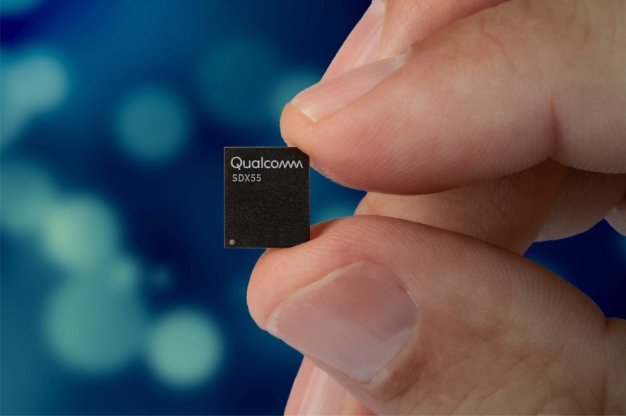Qualcomm Announces 7nm Snapdragon X55 5G Modem For Phones And Connected PCs
The Snapdragon X55 improves upon its successor in a number of ways; the first of which is the fact that it's built on new 7-nanometer process tech; the same process node as the Snapdragon 855 SoC. The integrated chip supports 5G NR mmWave and sub-6GHz spectrum bands (as before), but maximum theoretical speeds have been increased to 7 Gbps for downloads and 3 Gbps for uploads when connected to capable 5G networks.
The Snapdragon X55 also adds in a third band for 5G mmWave. The Snapdragon X50 only supported 28GHz and 29GHz bands, but the Snapdragon X55 adds the 26GHz band, which should allow it to be used in more global markets.
Because the X55 is also meant to cover all currently-available cellular networks, it is backwards compatible with 4G, 3G and 2G networks as well. With respect to 4G LTE networks, it supports Category 22 speeds, which allows for up to 2.5 Gbps downlink speeds.
With that being said, it’s still not a fully integrated solution like we see with current smartphone SoCs. We might not be widespread 5G penetration into all sectors of the smartphone market until the 5G modem can be fully integrated into low-end, mid-range, and high-end SoCs negating the need for a separate chip taking up valuable board real estate. But for devices like mobile hotspots or laptops, the Snapdragon X55 is a more favorable solution than its predecessor.
The Snapdragon X55 will be paired with a new 5G mmWave antenna module called the QTM525 (which replaces the QTM052), a new RF transceiver that will be used for 4G LTE and sub-6GHz 5G operation, and new sub-6GHz front-end modules. Qualcomm says that its end-to-end solution will provide even more efficient 5G speeds to a broader range of devices that might not have otherwise been possible with first-generation solutions.
In addition to the usual usage cases like smartphones, Always Connected PCs and mobile hotspots, Qualcomm also has an eye on the "extended reality" and automotive sectors with the Snapdragon X55.
"With significant evolution in capabilities and performance, our second generation commercial 5G modem is a true testament to the maturity and leadership of our 5G technology," said Qualcomm President Christiano Amon. "We expect our 5G platform to accelerate 5G commercial momentum and power virtually all 5G launches in 2019 while significantly expanding the global 5G rollout footprint."
According to Qualcomm, the first devices using the new Snapdragon X55 modem will begin shipping in the latter half of 2019. As for 5G coverage in the United States, most carriers are expecting to have nationwide coverage by the first half of 2020.




